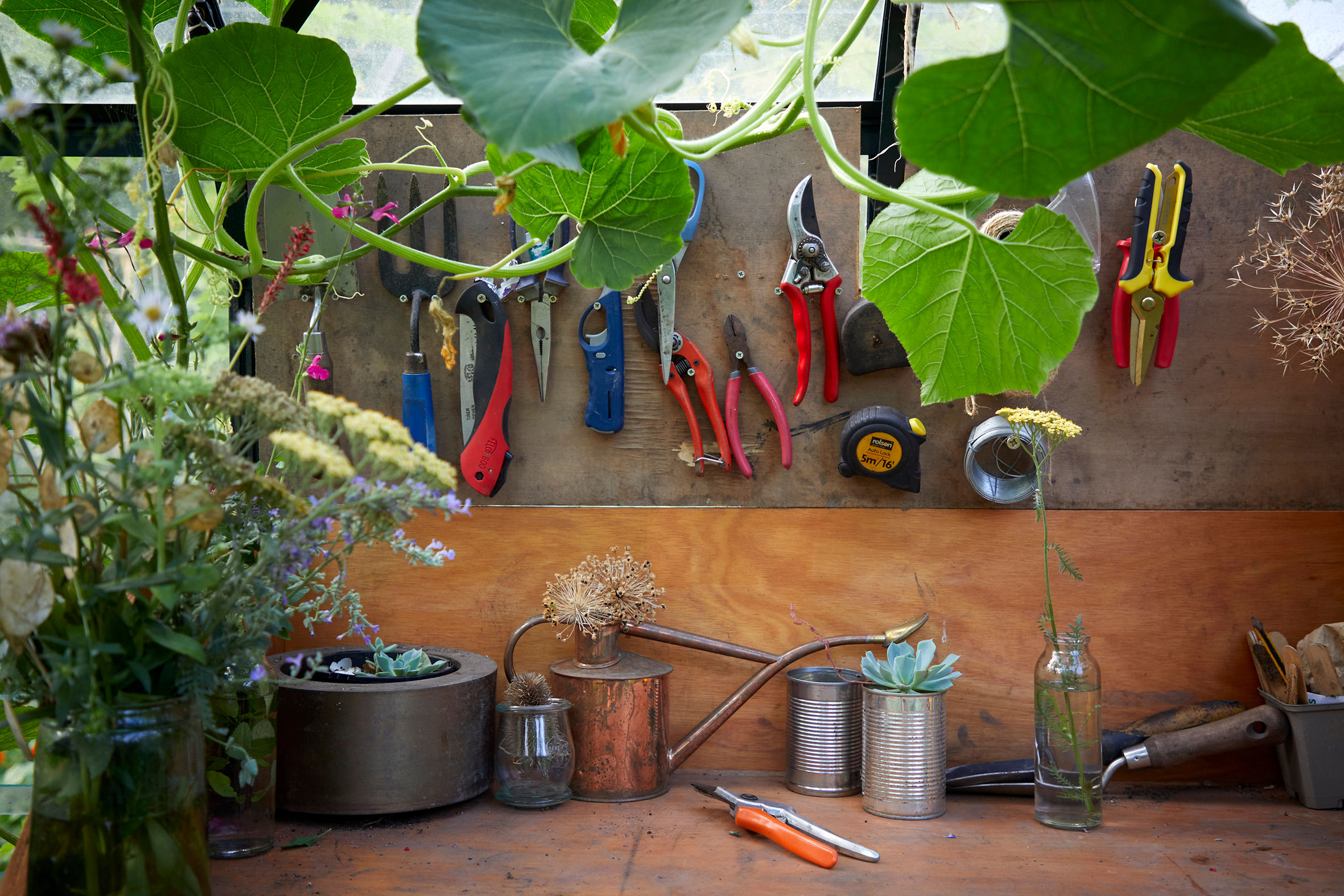
An allotment is the British English term for community garden, but it means more than that: it is a European concept of growing food where space at home might be limited.
Photography by Alister Thorpe.
Now based in Chiswick, West London, the landscape architect has been able to fulfill his dream of owning a glasshouse, while dividing the 30 square yards available to every allotment holder between his interest in food and a desire to experiment with plants.
Allotments are often messy but highly organized. So I decided to allocate roughly half of the allotment for edible plants and half for flowering perennials and annuals that I wanted to test and see how different plant combinations worked together.
The glasshouse is surrounded by personal touches like a habitat for insects on a bamboo frame, and woven edging along the dirt path.
Glass cloches provide warmth for young cucumbers in an uncertain climate.
“By showing real examples, it is easier to educate people to make changes in the way they live in their garden,” says Stefano.
Rusted metal arches provide structure in a wild-looking garden featuring wildflowers and edited weeds such as teasel.
Aside from the greenhouse, almost everything has provenance, with leftovers from design projects put to good use (such as bamboo canes that came with a delivery of climbers for a client project).
“The structure we designed for the vines was made out of leftover steel from a project of ours, and installed by the landscape contractor’s metal worker.”